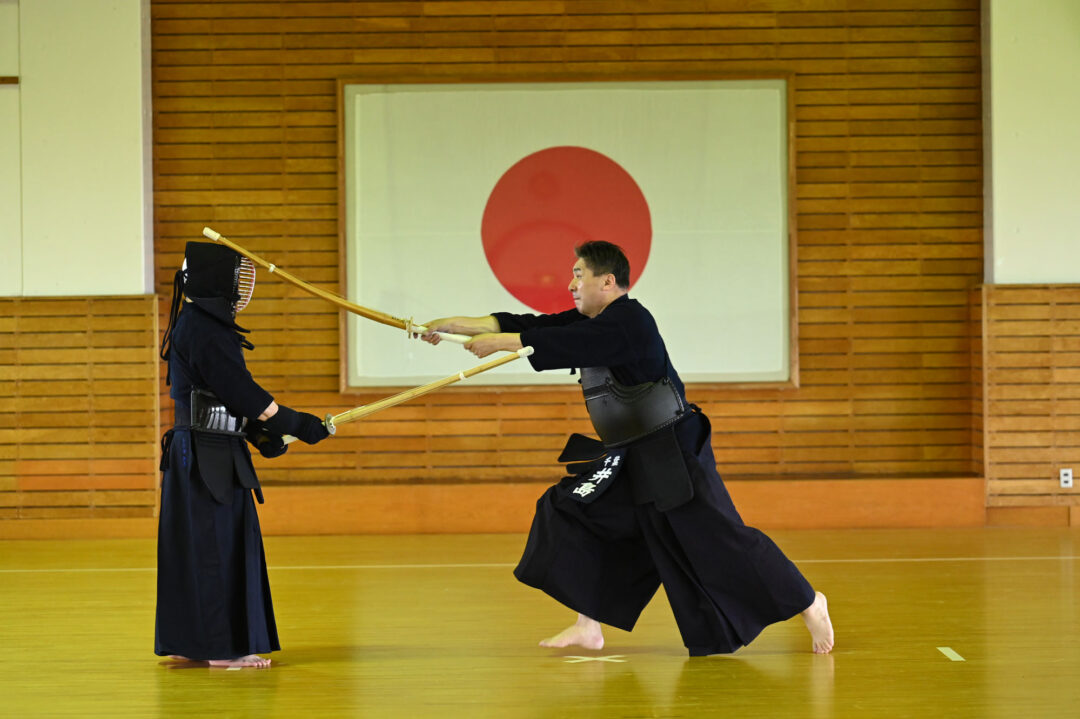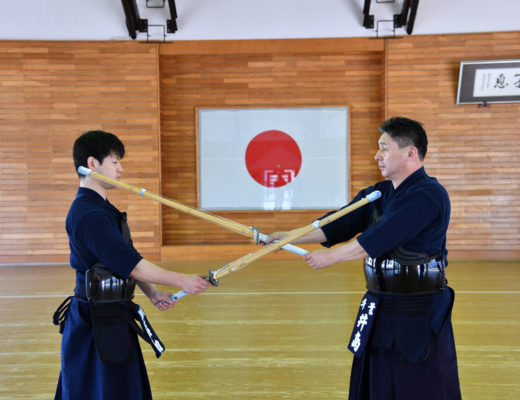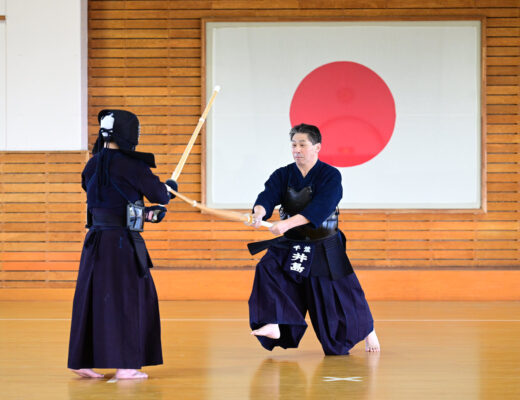2022.9 KENDOJIDAI
Everyone probably has been told to relax their upper body and put strength into their lower body, but just thinking about this does not mean that we can relax our upper body. As we progress from large to small strikes, we slowly learn how to relax as we progress. Ijima Sensei stresses that it is important to balance the amount of power you use. He explains how to train in order to learn how to relax.
Ijima Akira (Kyoshi 8th Dan)

Before talking about overcoming the use of strength, we must first consider the state in which we tend to tense up. Generally, this happens when we try to pressure or attack our opponent. Tensing up too much gives our opponent an idea of our intentions. This might lead to you giving your opponent the opportunity to strike with Debana, for example. In order not to give your opponent a sign when you apply pressure or use a technique, it is important no to let them know when you are applying strength. It is important to relax in both your Kamae and in your Seme.
In order to relax, correct posture, Kamae and body movement are of course important, as is breathing. If you are able to build up Ki in your lower abdomen by using your Tanden to breath, you will be able to attack without exerting force. On the contrary, if you fail to settle your Ki in your lower abdomen and breath using your chest, you will put strength into your upper body and give your opponent the opportunity to attack. When you are relatively new to Kendo, you will often be struck when the opponent surprises you. This is because you are breathing and unable to respond to your opponent’s movement as you are stuck in place and not relaxed.
In addition, for ideal breathing, the left fist, the back of the knee (popliteal space) and the left heel must be properly settled into place. If your body’s axis is not strong, your posture will crumble, leading to disturbed breathing. Therefore, a natural and correct Kamae and posture are the foundations of Kendo. On the other hand, if you are too conscious of your posture, your Kamae will control you and you will waste your time and energy. A good Kenshi is always in control of the degree to which they pay attention to this. It is ideal to create a state from which you can perform techniques at any time and at the same time deal with your opponent.
Specifically, begin with inspecting your Kamae. As mentioned earlier, pay attention to your left fist, hip, knee, back of the knee and heel.
It is important to keep your left fist firmly in the center and have it been one with your hips as you move. Rather than simply pushing your left hip forward, you should adjust your body to your opponent’s body. If it is not in unison with your left fist, you will end up with a sideways stance. This is especially important when striking Do. We are often told to strike with our hips rather than with our hands. By using our left hip, we can transmit power to our strikes.
Next is the left knee. It should also be facing your opponent. If your knee is off-center, your Kamae will break down, and you will not be able to transfer power to your opponent. The back of your knee (popliteal fossa) should not be tense or loose. Instead, focus on building up power there. Some people might tell you to put power in it, but if you stretch it too much, your leg will become stiff and you won’t be able to move.
Furthermore, the left heel is related to breathing and is an important part of the body. I just talked about breathing through the Tanden. By imagining pushing your breath all the way down to your heel, you can achieve a relaxed and strong Kamae.
It is also important to tie the knots of the Hakama and Tare firmly to your lower belly. If the knot and the lower abdomen are in unison, your clothes will not move around.
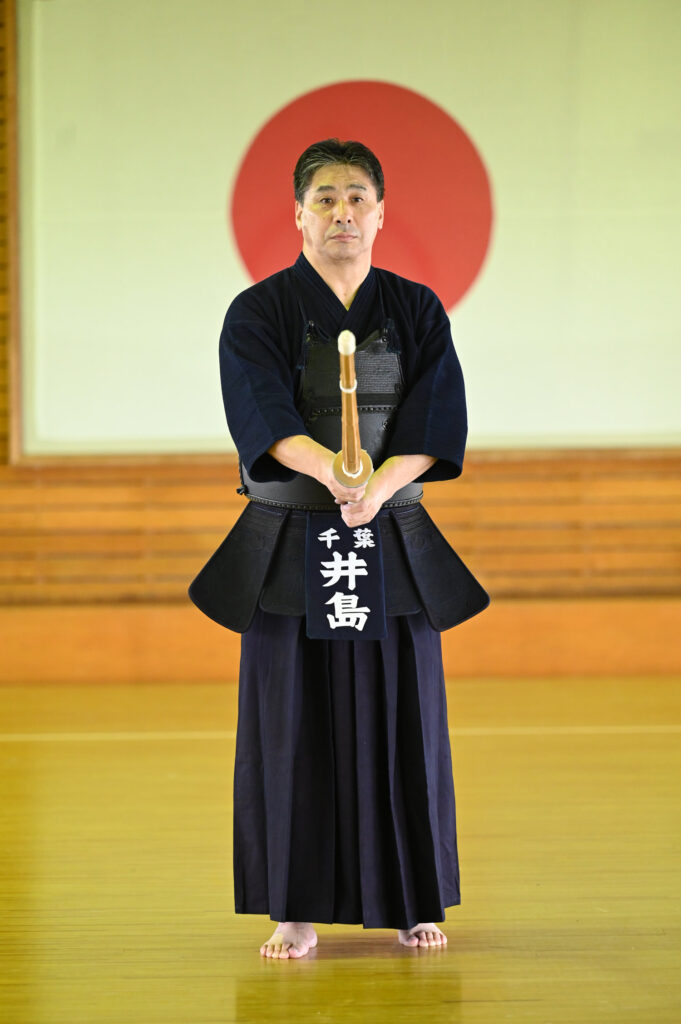
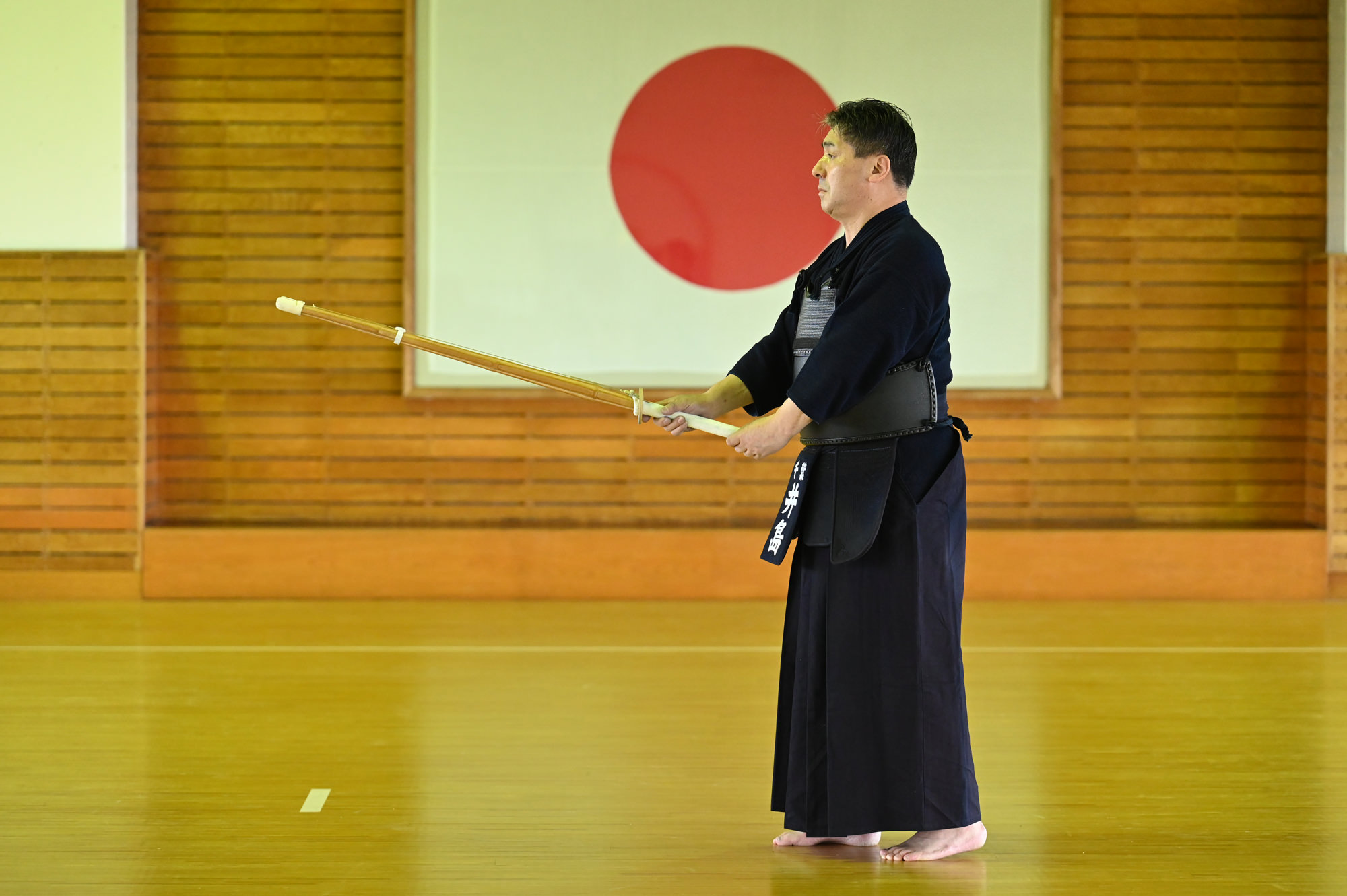
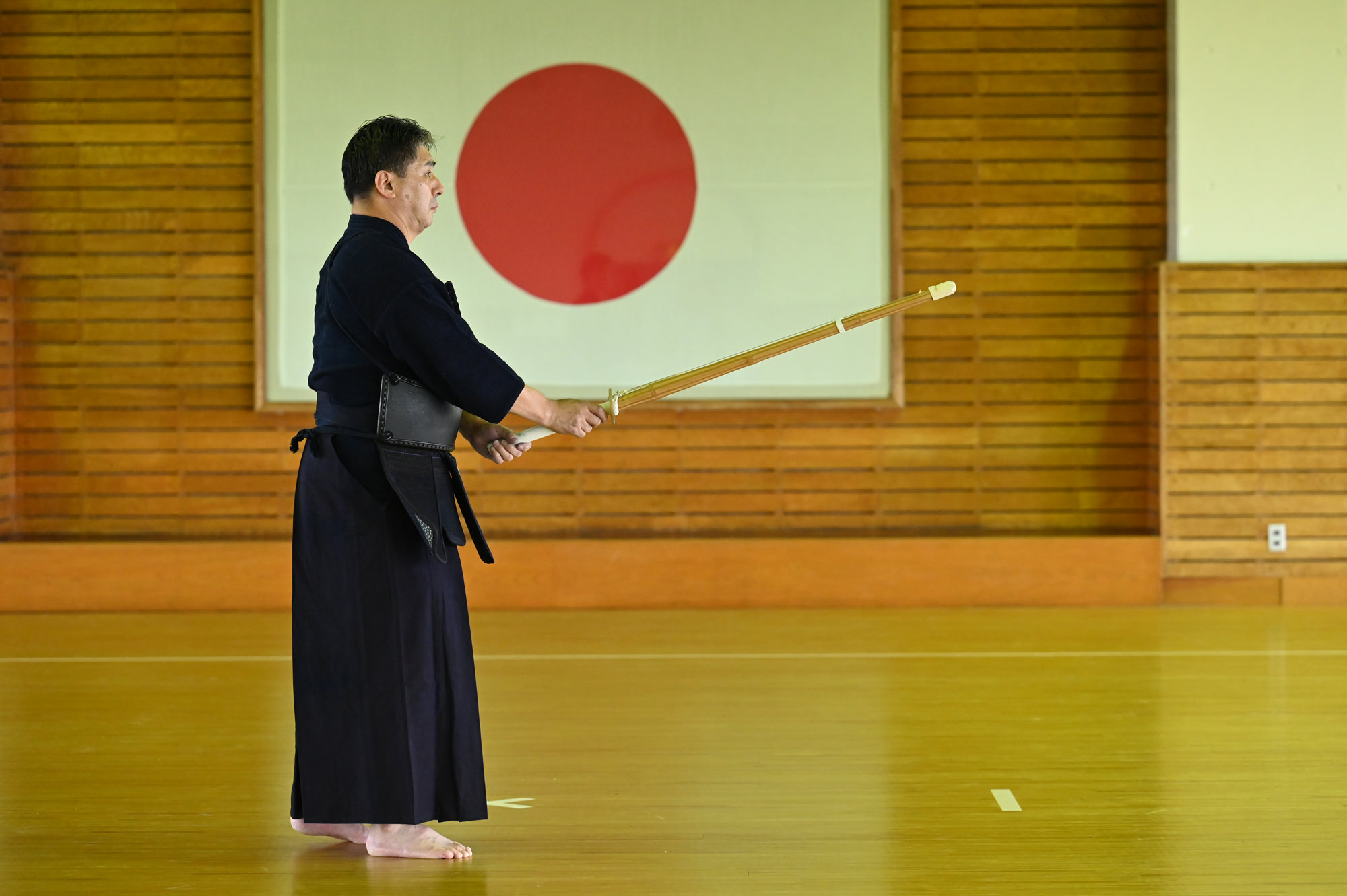
Find the balance of power by largely swinging your Shinai
The rest of this article is only available for Kendo Jidai International subscribers!

